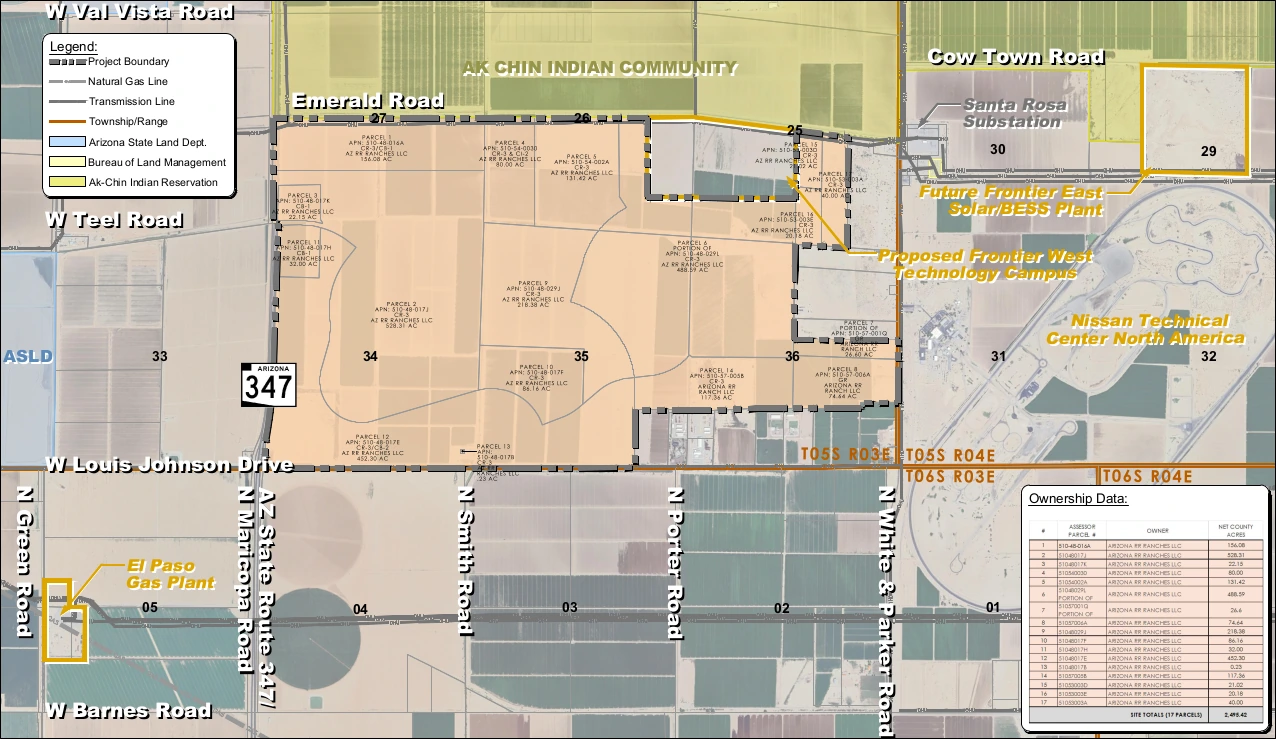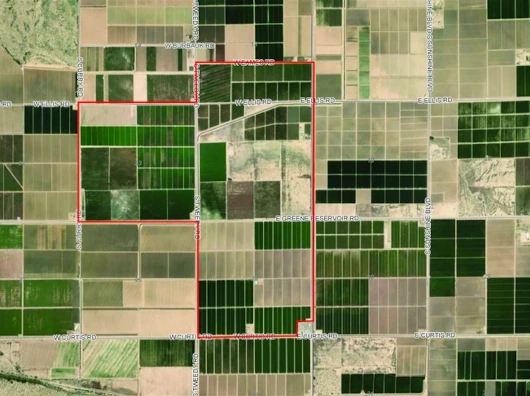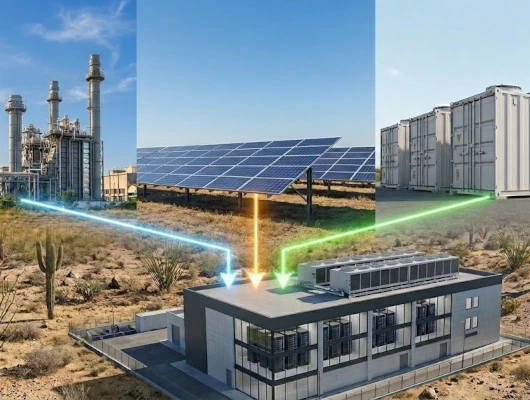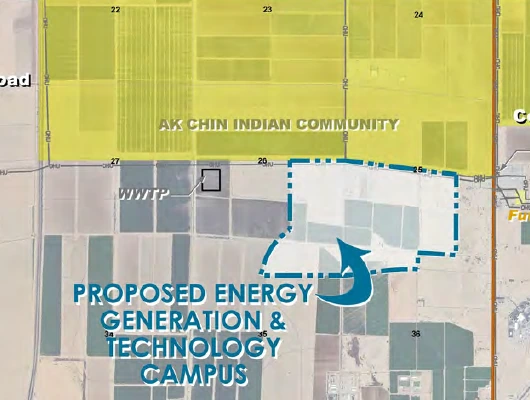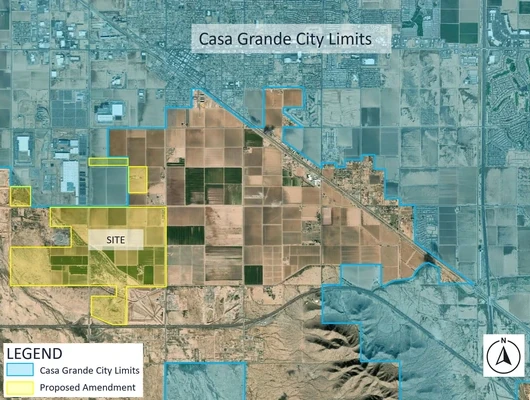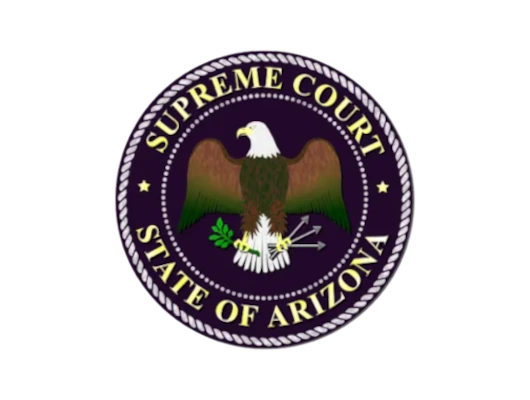The Pinal County Planning and Zoning Commission held a work session July 17 to discuss a major proposal that would transform nearly 2,500 acres of agricultural land into an energy generation and technology campus.
The Proposal
The agenda item, PZ-PA-015-25, represents a work session to discuss an amendment to the 2019 Pinal County Comprehensive Plan. W Holdings serves as the applicant, with Jordan Rose of Rose Law Group acting as the agent, seeking to re-designate 2,495.2 acres from Moderate Low Density Residential to Employment designation.
The proposed Energy Generation and Technology Campus would be located approximately 8 miles south and east of the City of Maricopa, south of the Ak-Chin Indian Community, in unincorporated Pinal County. The property is located northeast of the intersection of Arizona State Route 347 and West Louis Johnson Drive, with the Nissan Technical Center to the east.
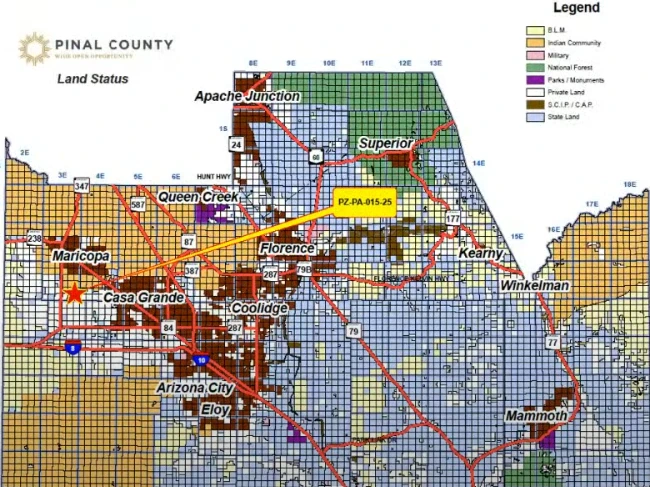
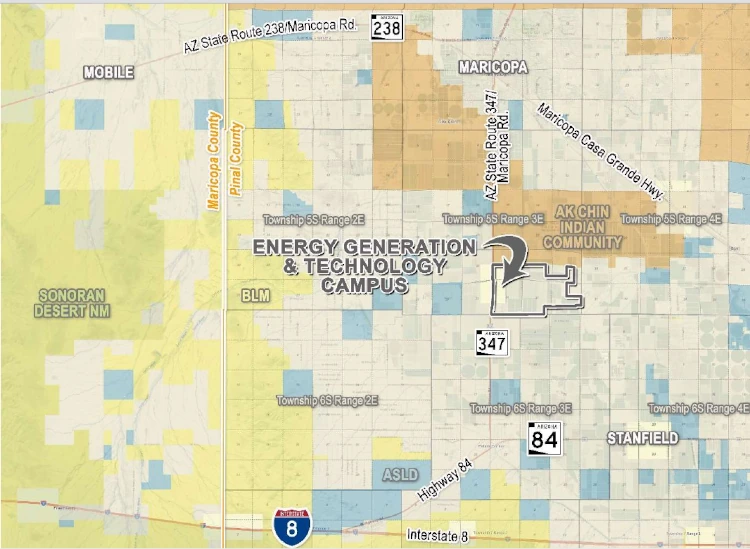
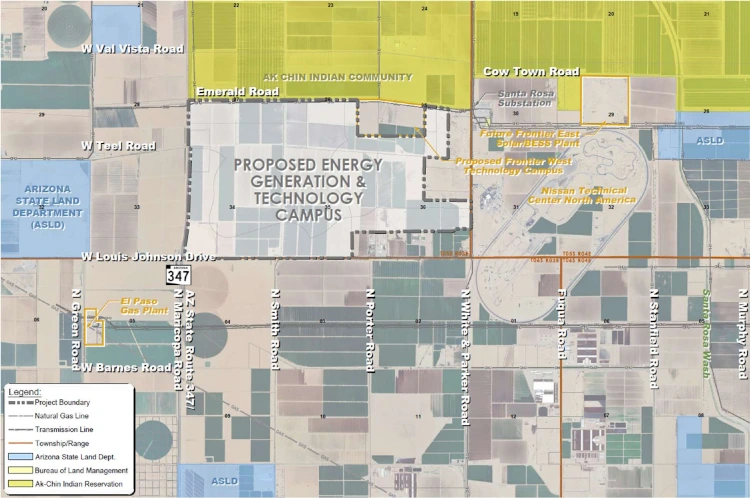
Current Conditions
Senior Planner Glenn Bak presented the proposal to commissioners, describing the area as “currently, primarily agricultural.” The parcels fall within the extended planning area of the City of Maricopa and are located in Flood Zone X, which indicates minimal risk of flooding.
Arizona RR Ranches LLC owns the property, which consists of 17 parcels across multiple sections. The surrounding area contains undeveloped land and agricultural uses with various zoning districts.
Zoning Changes
The proposal would change the comprehensive plan designation from Moderate Low Density Residential (1-3.5 dwelling units per acre) to Employment. This represents a major comprehensive plan amendment, as any change from a residential classification to a nonresidential land use classification of 160 or more contiguous acres meets this threshold.
The site was previously part of approved master-planned residential communities totaling approximately 10,600 units, which would be replaced by this new employment-focused development.
Following approval of the comprehensive plan amendment, the applicant would return with a rezoning request and potential Planned Area Development (PAD) request to refine specific uses for the site.
Uncertainty About Future Uses
Commissioners expressed concerns about the vague nature of the proposed development. When Commissioner Daren Schnepf asked about the “technology” component of the campus, Bak acknowledged uncertainty about end users.
“It’s very early in the process, so I think some of the end users are not known at this point. This is the first step here with the comprehensive plan update,” Bak explained. “If this is approved, then they come back with the rezoning and the potential PAD request.”
Commissioner Karen Mooney raised concerns about this approach during future development reviews. “One of the challenges I have is if there is a change with the overall major comp plan, that is an argument they use. ‘This is the plan that was approved in 2025 or 2026′” Mooney said, responding to Commissioner Schnepf’s question.
Green Energy Possibilities
The discussion revealed the project could potentially focus entirely on renewable energy. When Vice-Chairman Robert Klob asked if it “could potentially be all green energy,” Bak responded, “Potentially, yeah.”
Senior Planner Sangeeta Deokar noted that if the project becomes exclusively green energy, “then the land use will not be employment. It would be green energy production.”
Bak also described modern solar installations and emerging agricultural applications: “Typically what happens is they have solar panels that are mounted on metal posts, and then they follow the sun throughout the day. There’s quite a bit of space typically underneath them for both water and wildlife to pass. One of the trends here with some of these now is what’s called agrivoltaic. So if they raise the panels somewhat more, you can get tractors underneath the panels, and you can both farm and have solar on the same land.”
Commissioners’ Comments
Commissioner Mooney expressed skepticism about claims that wildlife could coexist with solar installations. “Animals aren’t necessarily going to live… up against my house. They’re not going to live up against solar necessarily,” she said. “So while they may be raised off the ground with the flooding, depending on how bad it is, a few feet off the ground isn’t enough to mitigate that from the panels either.”
Vice-Chairman Klob raised multiple concerns about the proposal, focusing on lost commercial opportunities along the crucial State Route 347 corridor.
“The 347 is the primary arterial road connecting Maricopa to Interstate 8. It’s the primary commercial development road up through the city of Maricopa,” Klob said. “Having this energy generating, solar or whatever, abutting this takes away a very large opportunity, especially with the Ak-Chin community already cannot be developed. So this is some of the first opportunities that this area would have to obtain any of that commercial development.”
Klob argued that the highway corridor represents valuable commercial real estate that would be lost to energy development. He noted that because the adjacent Ak-Chin community land cannot be developed for commercial purposes, the proposed site represents one of the few remaining opportunities for commercial development in the area.
Klob also mentioned infrastructure challenges: “I also know, again, based on that previous development that came through last year, there’s a significant flood and wash running along the 347 there.”
Regarding potential community opposition, Klob predicted resistance from the Ak-Chin community. “I think that we’re also going to get some pushback from the Native American community as well, the Ak-Chin community, on having this as adjacent to their lands.”
He concluded his remarks by stating: “I think this is going to be another difficult one to move forward.”
What Comes Next
This work session represents only the beginning of a lengthy review process. Staff indicated they will share updated information with the Board of Supervisors during an August session. If the comprehensive plan amendment receives approval, the applicant would return with more detailed rezoning and development plans that would clarify specific uses and address community concerns.
The commission’s discussion suggests this proposal faces significant challenges before any final approval, particularly regarding commercial development opportunities, environmental impacts, and community acceptance.
